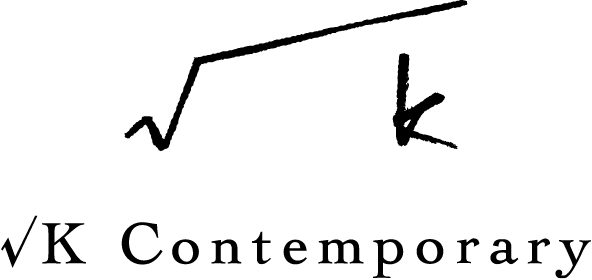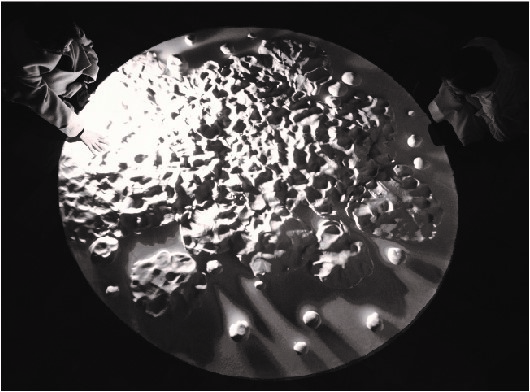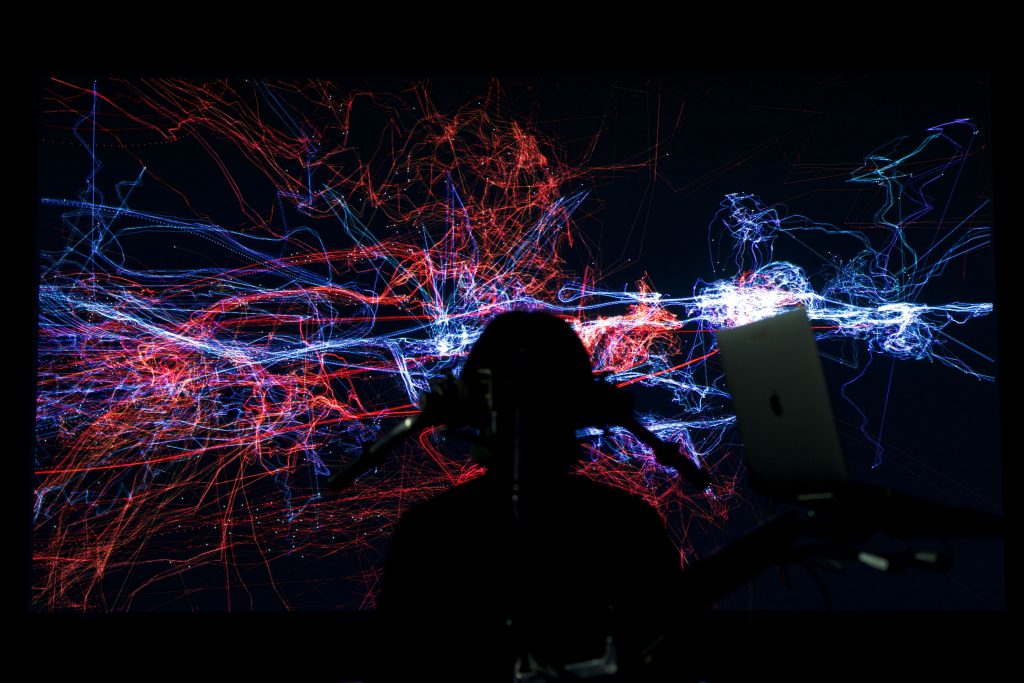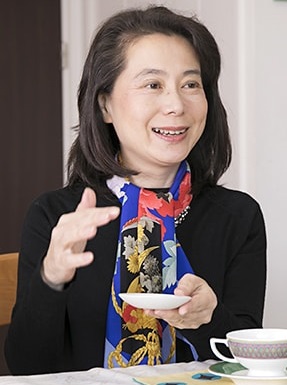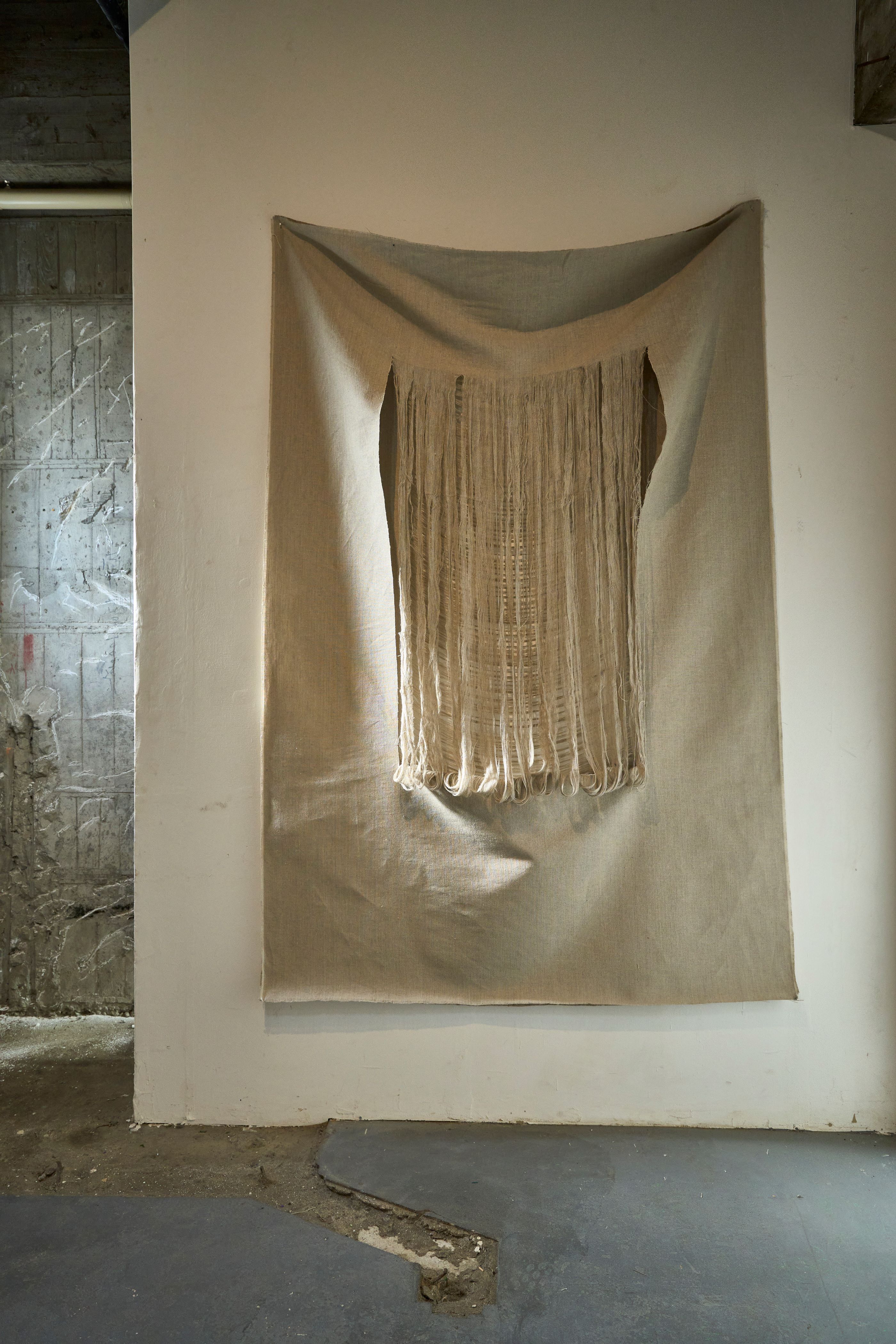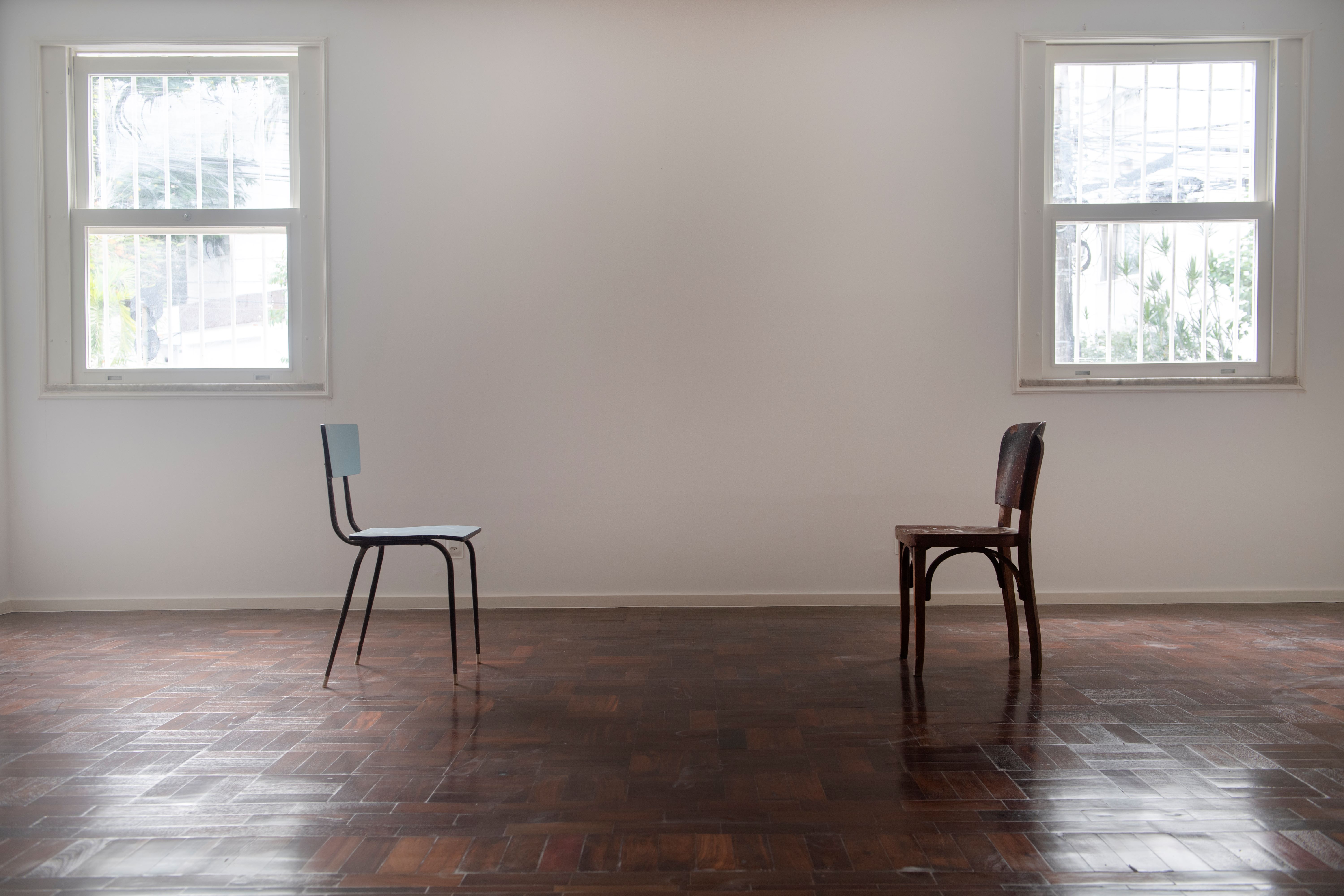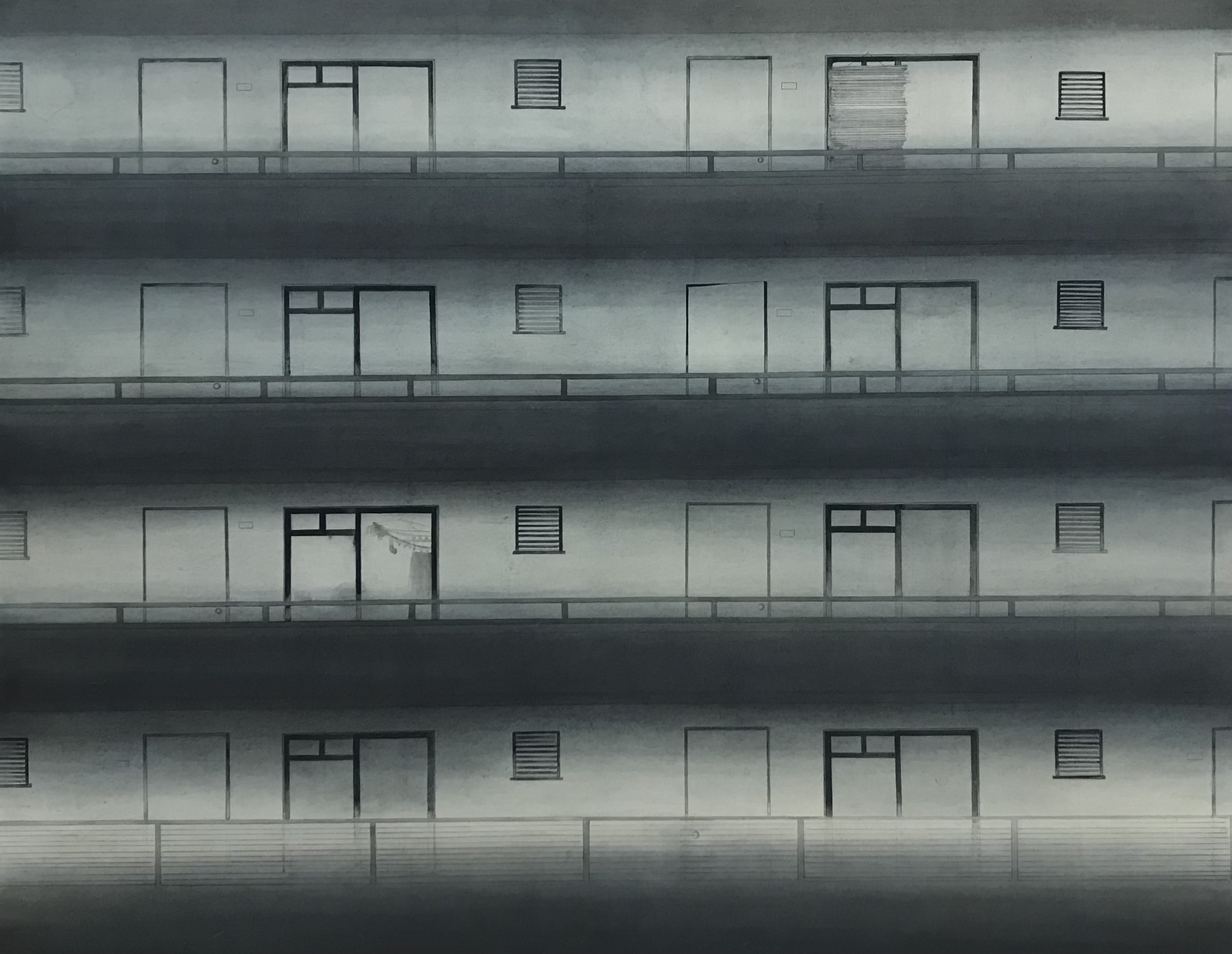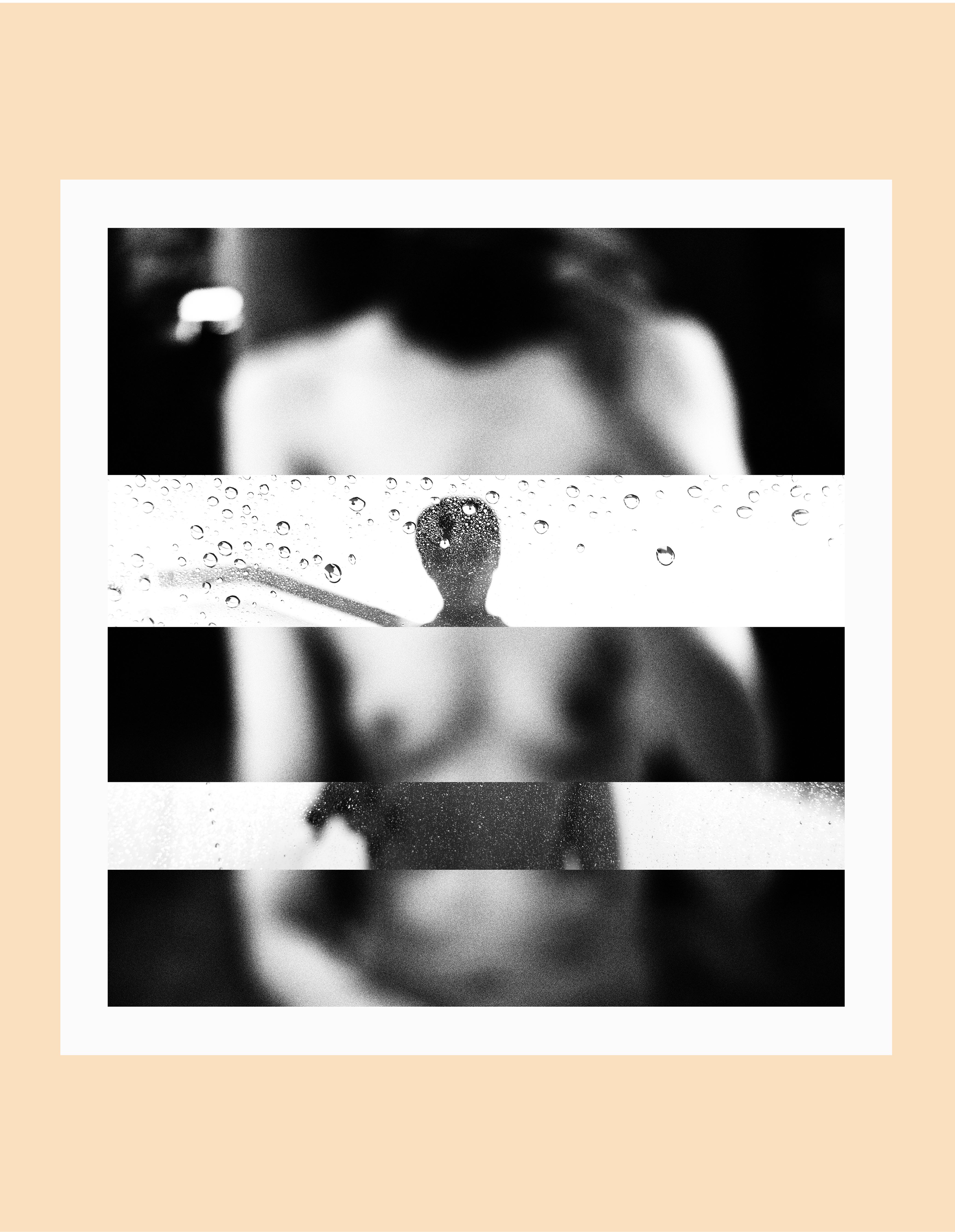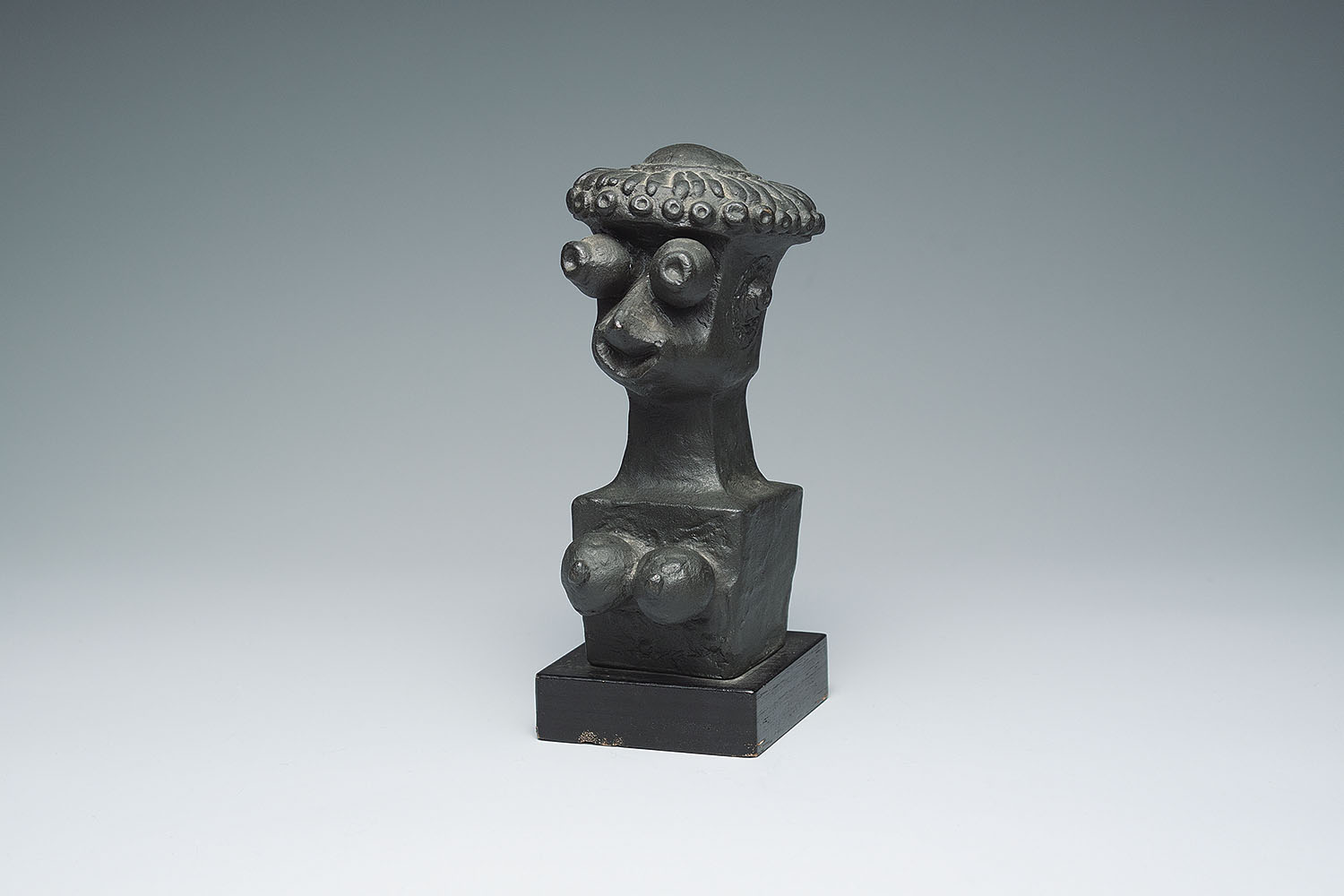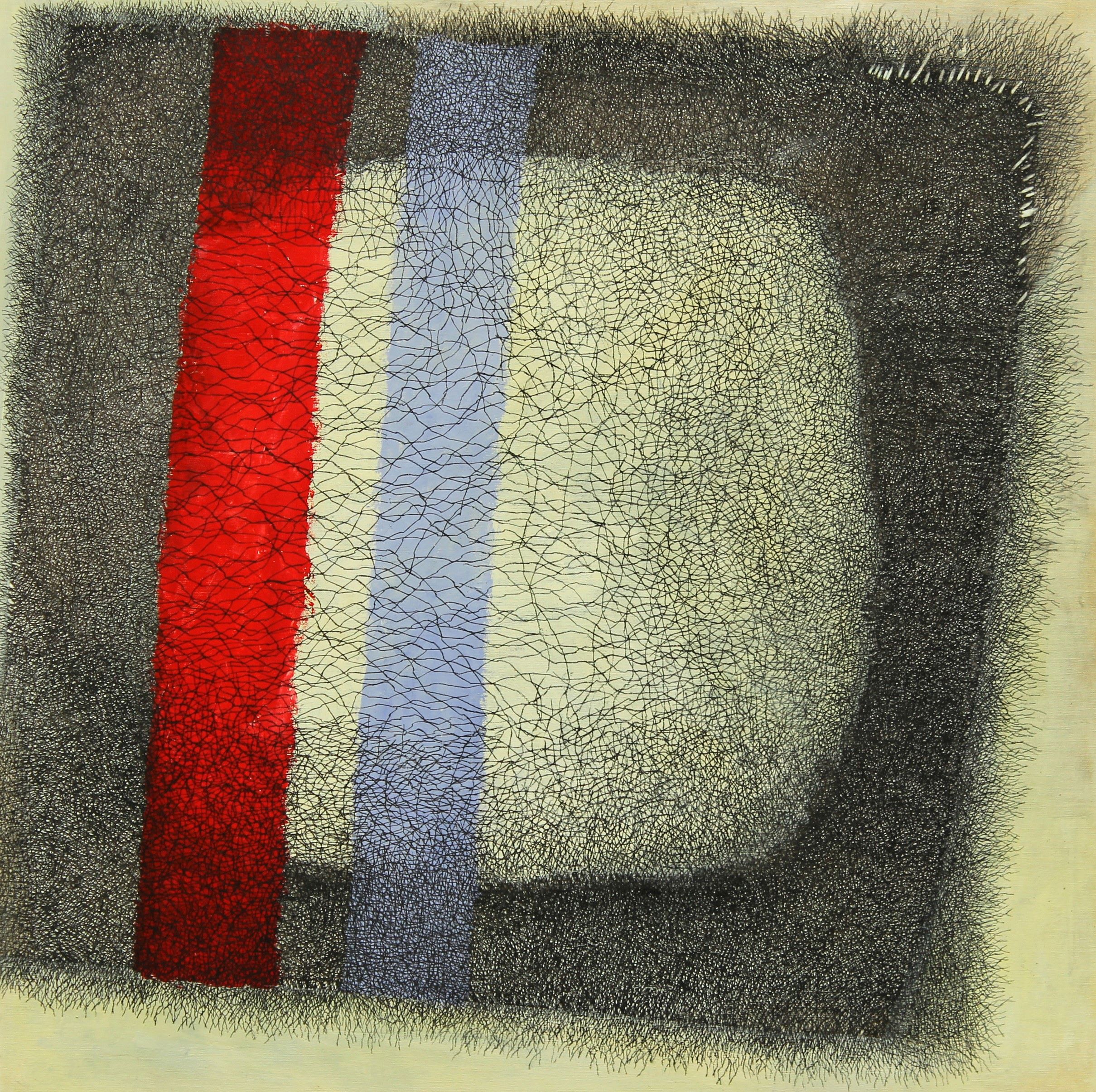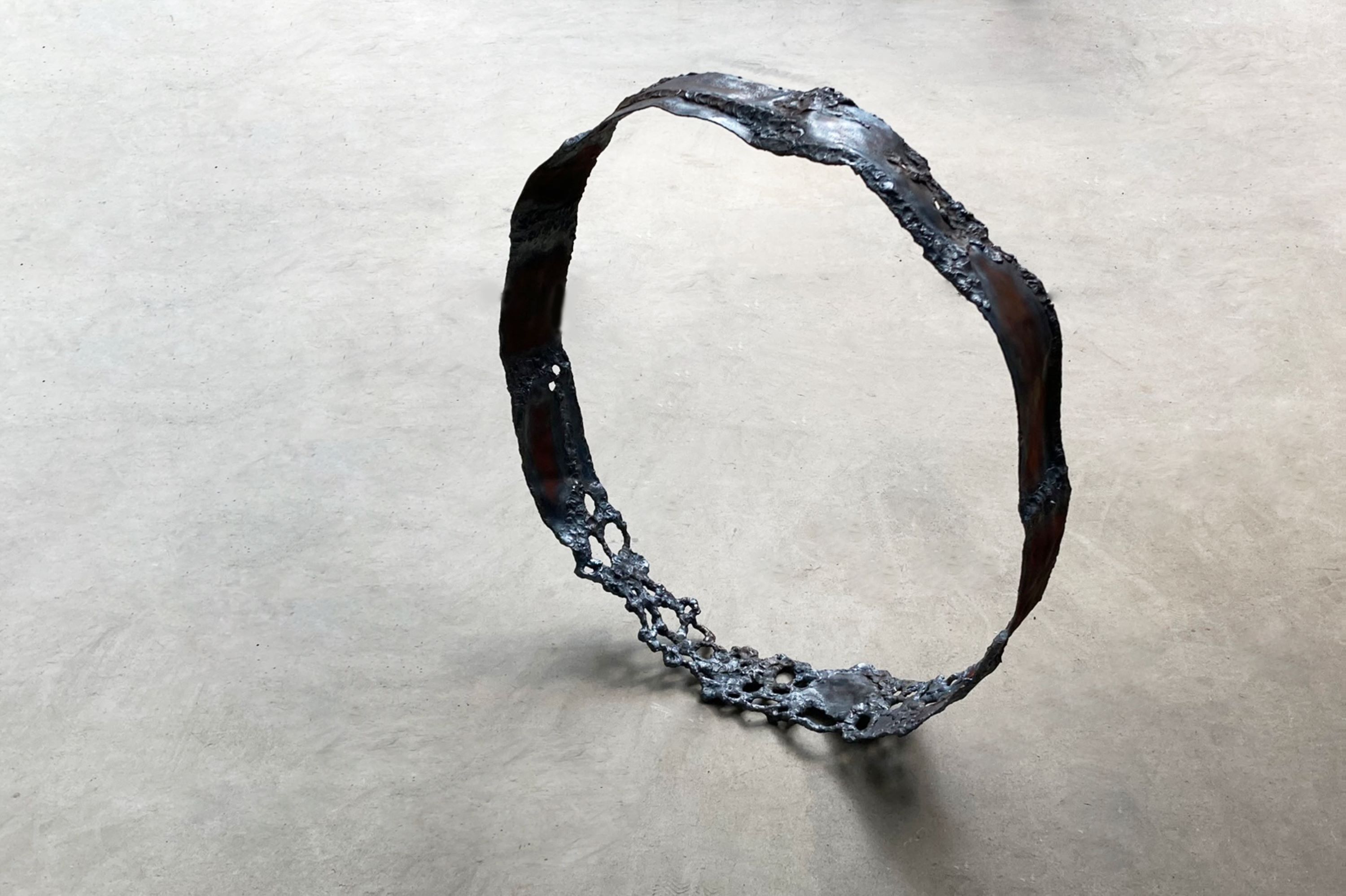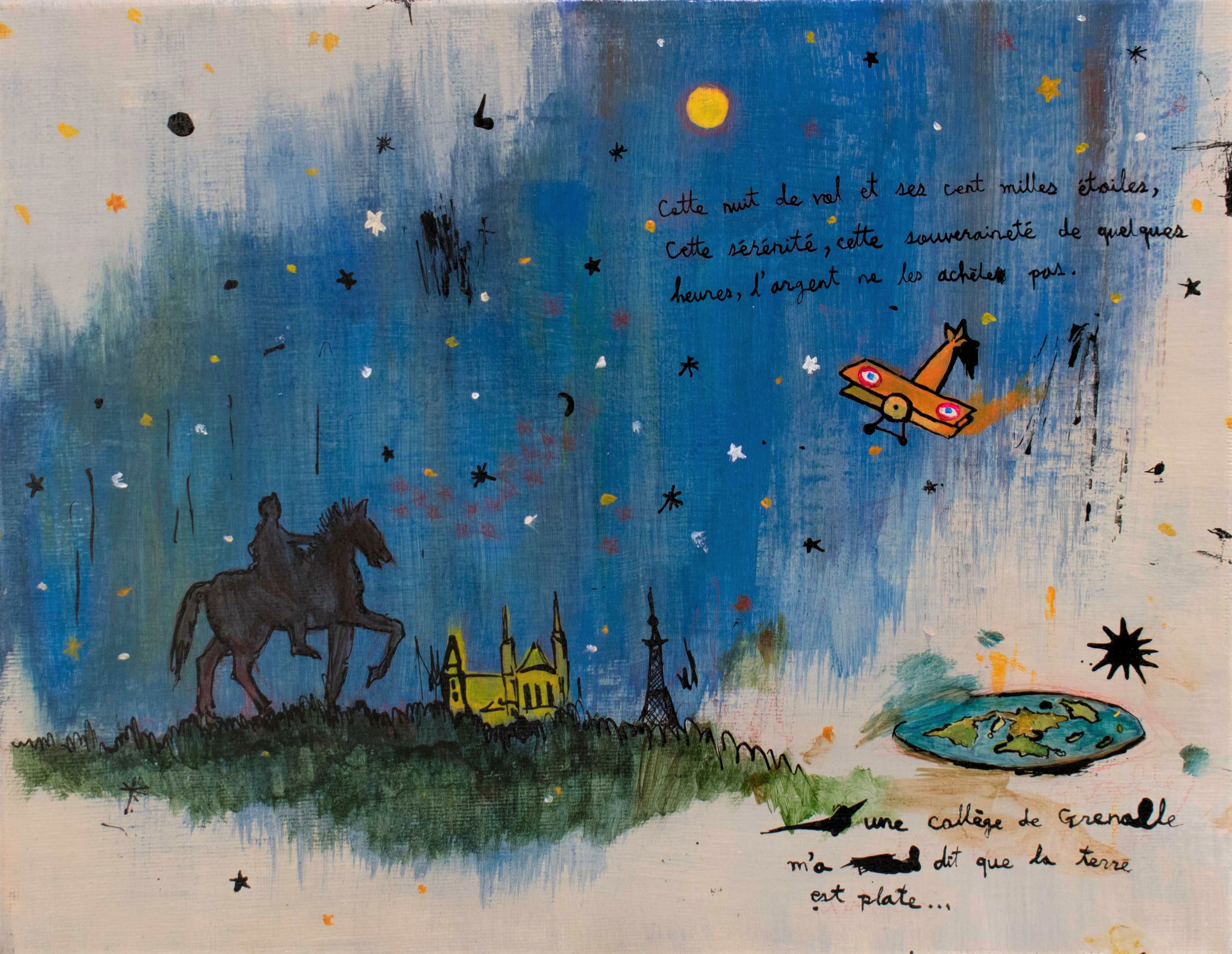Organized as part of √K Contemporary's ongoing Being – Mom is a Woman – exhibition, a special sake and art tasting event will be held at our gallery.
Offering the chance to enjoy art through all your senses, the event will be led by sake stylist, food culture researcher, and CEO of Sai Shoku Ken Bi Co., Ltd. Ms. Makiko Tejima. In this event, participants will have the opportunity to taste and learn more about Ms. Tejima’s hand-selection of sake produced by two female-operated breweries: Imada Sake Brewery, led by the famous female sake toji (brewmaster) Ms. Miho Imada, and Tsurunoe Shuzo, a mother-daughter operated brewery. In addition, participants will, of course, gain an inside glimpse into the artists and works of the exhibition and, perhaps through this experience, discover new ways of viewing art.
We welcome you to join us on this very special occasion!
Following the event, the sake offered in the tasting session will be available by the glass at a separate fee.
*Please note that this event will be held in Japanese.
Co-Ordinator|Makiko Tejima (Sai Shoku Ken Bi Co., Ltd CEO)
Food Culture Researcher / Japan Sake and Shochu Makers Association Certified Sake Stylist / Japan Council for Promotion of Sake Brewery Tourism Steering Committee / Brewing Society of Japan Director
Inspired by the notion of “a life enriched by sake”, Tejima actively seeks to support Japan’s regional communities through the national and international promotion of Japanese sake and food culture, and content planning for gastronomy tourism.
On Sai Shoku Ken Bi Co., Ltd
Sai Shoku Ken Bi Co., Ltd works to promote and support the future of Japan’s regional community by offering PR and consulting services in Japan and overseas for traditional Japanese food cultures such as sake.
Sai Shoku Ken Bi Co., Ltd Website: https://www.saishokukenbi.com
Event Outline
Schedule|The event will be held a total of 4 times during the period of the exhibition.
1# Friday, May 12, 6pm to 8 pm
2# Saturday, May 13, 3 pm to 5pm
3# Friday, May 19, 6pm to 8 pm
4# Saturday, May 20, 3 pm to 5pm
Venue|√K Contemporary (6 Minamicho, Shinjuku-ku)
Admission Fee|3500 yen(incl. 6 varieties of sake for tasting)
Capacity|10 people *Allocated in order of inquiry
Tasting Menu|3 varieties each from Imada Sake Brewery (Hiroshima) and Tsurunoe Shuzo (Fukushima)
*Imada Sake Brewing’s premium Kijo-shu, “Legacy”, will be available to taste at an additional fee. All varieties will be available by the glass, at an added fee, following the tasting event.
For reservations and more, visit the √K Contemporary Peatix page: https://root-k.peatix.com
<Please note>
・ Participants must not, under any circumstances, drive under the influence of alcohol.
・ Those under the age of 20 cannot participate in this event.
・ This event will be held in Japanese.
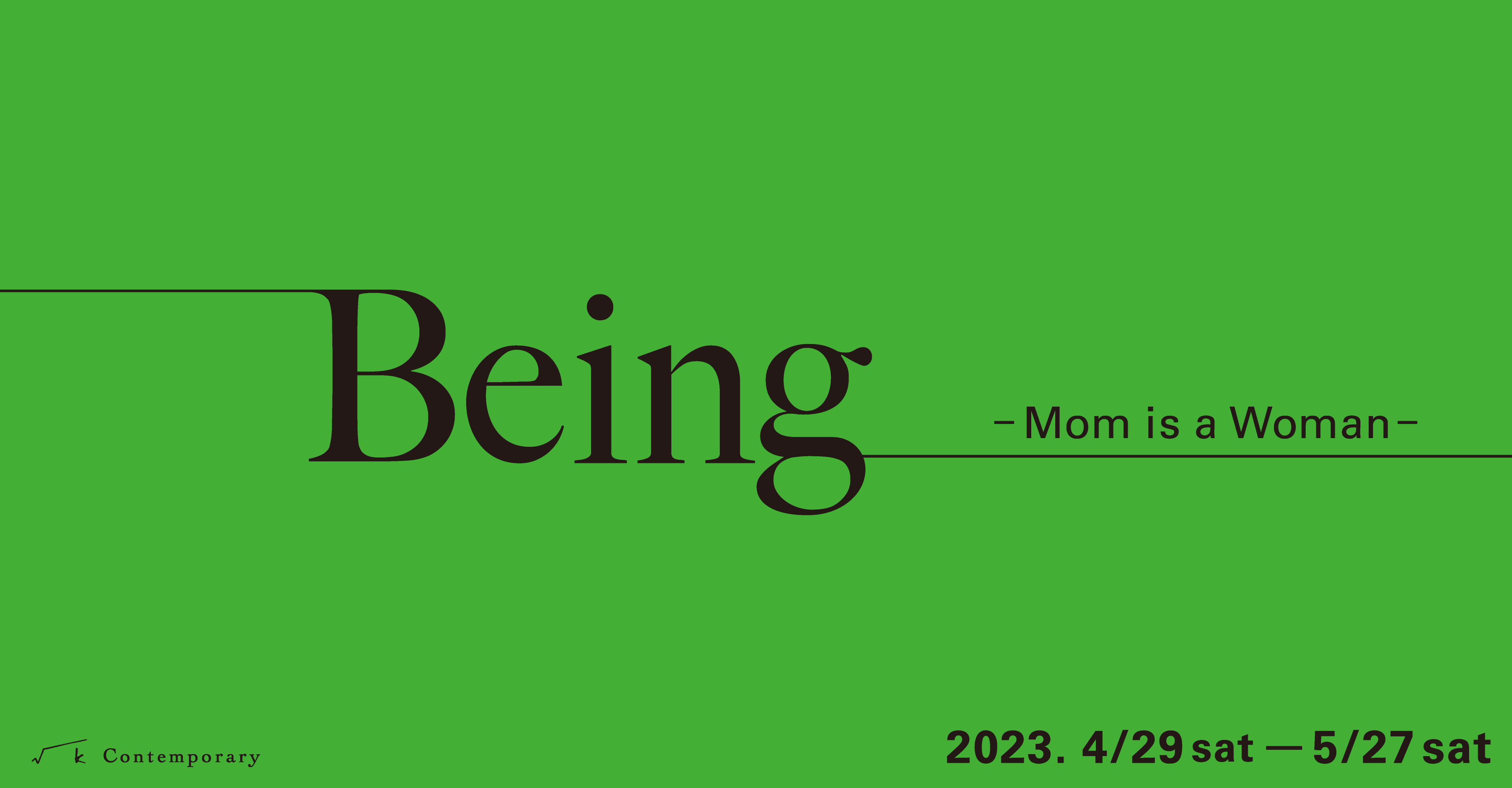

Being – Mom is a Woman –
Dates| April 29 (Sat) to May 27 (Sat), 2023 *Open on Public Holidays and throughout Golden Week
Venue| √K Contemporary(Minamicho 6, Shinjuku-ku, Tokyo)
Exhibiting Artists|Saori (Madokoro) Akutagawa, Haruko Hasegawa, Emi Uchida, Yuki Katsura, Ruriko Taguchi, Mitsuko Tabe, Tazuko Tanaka, Ching Wen Chang, Mai Kato (Horayama), Erize Hori, Yoko Matsumoto, Seiko Mikami, Ritsuko Minemura, Yuna Yagi, Sanami Yamada, Shiori Watanabe, Carol Chediak, Cornelia Thomsen, Ha Haengeun, Sohyun Park, Jimere, Lim Seo Hyun
Collaborators| Yamaguchi Center for Arts and Media [YCAM], Masaya Inoue (TODOROKI Co., Ltd.), Norimichi Hirakawa, Jung-Yeon Ma, Gallery Kawafune, Sai Shoku Ken Bi Co., Ltd,, Gallery COLORBEAT
Design|Shintaro Tabara
√K Contemporary is proud to announce the launch of a series of exhibitions titled Being, a series of exhibitions centered around leading artists of the future. On view from April 29 (Sat) to May 27 (Sat), 2023, the inaugural exhibition of this series, Being – Mom is a Woman – will present works by approx. 20 established to emerging, wartime to contemporary female artists from around the globe.
|| On the Exhibition Series, Being ||
The establishment of √K Contemporary stemmed from an ambition to preserve human history through art, and the desire to support artists who lead the past to the future.
With this ethos at its heart, Being hopes to realize these ideas through a set of uniquely curated exhibitions that bring the “present” together with the “future”.
————————————
“Being”
Much like how wisdom may be attained through the unraveling of the past embedded within the artworks that remain today, much of what we create in our current lives becomes a part of the future. As such, the very things that exist within our “present” is, indeed, very precious.
Our existence is but a speck of dust within the all-embracing universe.
If synergy can be generated through coincidental interactions, then perhaps this phenomenon is embodied by some works of art.
Civilization has been built through the sharing of cultures and ideas and, even in the over-saturated climate of today’s world, we are able to imagine a future. Through the perpetual act of sublimating present lives and experiences into works of art, humanity is able to leave behind a legacy. In this sense, the weight of one’s existence is most felt through the context of the now.
Humanity’s existence remains meaningful so long as it remains conscious of its very own existence and history.
————————————
|| The Inaugural Exhibition, Being -Mom is a Woman- ||
The very first installment of this exhibition, Mom is a Woman, is an exhibition of approx. 20 mid-twentieth century to present-day, established and emerging international female artists.
Whilst also being an incredibly diverse assembly of artists from differing genres, periods, countries, and cultures, the exhibiting artists are drawn together by their shared identification with womanhood. Unbound by socially construed ideas of gender, these artists express their ideas of identity and existence through their works. In turn, what they embody through their production is a high sense of self-reflection and awareness, the strength to constantly challenge themselves, and the ability to overcome differences, maintaining dignity and respect as female artists unconstrained by superficial barriers.
In this assembly of artists from disparate times and cultures, what kind of synergy will emerge during the course of the show?
With this in mind, Mom urges visitors to fully experience its works and become a witness to the present and future of humanity’s very own existence.
|| Exhibition Highlights ||
1. An Exhibition that Draws Female Artists Across Different Ages, Genres, Continents, and Cultures
With the gallery’s ethos at its center, Being’s inaugural exhibition brings together approx. 20 artists across varying periods, countries, and genres.
From wartime to postwar and contemporary, emerging artists, Mom will present a range of works by artists from Japan, Korea, Brazil, Germany, and Taiwan across three floors of the gallery.
Exhibiting Artists (Tentative)
Saori (Madokoro) Akutagawa, Emi Uchida, Yuki Katsura, Ruriko Taguchi, Mitsuko Tabe, Ching Wen Chang, Mai Horayama, Erize Hori, Yoko Matsumoto, Seiko Mikami, Ritsuko Minemura, Yuna Yagi, Sanami Yamada, Shiori Watanabe, Carol Chediak, Cornelia Thomsen, Ha Haengeun, Sohyun Park, Jimere, Lim Seo Hyun *Subject to change
2. From Installations to Video Art, Photography, Sculptures, and Paintings: An Exhibition that Features Works from a Wide Spectrum of Genres
Featuring works from a wide range of genres, Mom will present paintings, installations, photographs, sculptures, and more across three floors of the gallery, from the basement to the 2nd floor.
Sanami Yamada, One (2020)
Video installation (2 minutes 53 seconds), mixed media
3.A Special Display of Seiko Mikami’s interactive work, Eye-Tracking Informatics
Seiko Mikami, Eye-Tracking Informatics (2011)
Photography by Kazuomi Furuya, Courtesy of Yamaguchi Center for Arts and Media [YCAM]
The exhibition will feature a special display of Japanese media artist, Seiko Mikami’s Eye-Tracking Informatics. Mikami, who sadly passed away in 2015 at the age of 53, produced and exhibited this work at the Yamaguchi Center for Arts and Media [YCAM] in 2011. This special display will be the first presentation of Mikami’s Eye-Tracking Informatics since NTT InterCommunication Center [ICC]’s 2019 exhibition. Based on the notion of “observing the act of observation”, Mikami’s installation visualizes the viewer’s gaze in a three-dimensional virtual space.
For full details on Mikami’s special display and its reservations, please visit the page below.
https://root-k.jp/exhibitions_en/seiko-mikami_eye-tracking-informatics/
Artist | Seiko Mikami(三上 晴子 / 1961- 2015)
Former artist & professor at Tama Art University’s Media Art Laboratory. Since the 1980s, Mikami has presented large-scale installations themed on information society and the human body. In the 1990s, most of her works were interactive media art installations that incorporated human perception; from her eye-tracking project “Molecular Informatics,” to her work regarding acoustic sense and the living body sound “World, Membrane and the Dismembered Body,” her work “gravicells – gravity and resistance” centered on the theme of the gravity called the 6th consciousness and “Desire of Codes”, which focused on the coded individual in an information society.
Mikami has exhibited with Fundacio Joan Miro, Le Musée des Beaux-arts de Nantes (Nantes), Künstlerhaus Vienna (Vienna), Kulturhuset Stockholm (Stockholm), and Canon ARTLAB (Tokyo). Mikami has also presented her works at a number of international media art festivals such as transmediale (Berlin), DEAF (Rotterdam), SHARE (Turin), Ars Electronica (Linz), MoiMulti (Quebec), TESLA (Berlin), VEROCITY Festival of Digital Culture (UK), TRUST (Dortmund), ISEA and more. Mikami held her solo exhibition “Desire of Codes” at Yamaguchi Center for Art and Media [YCAM] and NTT InterCommunication Center [ICC] and from 2012, went on to travel around the world. She passed away in 2015 at the age of 53.
Sourced and edited from the NTT InterCommunication Center [ICC] Website(https://www.ntticc.or.jp/en/archive/participants/mikami-seiko/)
Seiko Mikami, Eye-Tracking Informatics Exhibition Website: https://root-k.jp/exhibitions_en/seiko-mikami_eye-tracking-informatics/
_____________________________
|| Events|Sake & Art Pairing ||
A sake and art event led by sake maker and stylist, food culture researcher and CEO of Sai Shoku Ken Bi Co., Ltd, Ms. Makiko Tejima will be held during the course of the exhibition. For this collaborative occasion, participants will be given the opportunity to enjoy the female sake specialist’s exclusive selection of sake inspired by the show and gain an inside view into the stories behind the exhibited works.
For further details, see the “Event” section below.
Co-Ordinator|Makiko Tejima
Sai Shoku Ken Bi Co., Ltd CEO
Food Culture Researcher / Japan Sake and Shochu Makers Association Certified Sake Stylist / Japan Council for Promotion of Sake Brewery Tourism Steering Committee / Brewing Society of Japan Director
Inspired by the notion of “a life enriched by sake”, Tejima actively seeks to support Japan’s regional communities through the national and international promotion of Japanese sake and food culture, and content planning for gastronomy tourism.
On Sai Shoku Ken Bi Co., Ltd
Sai Shoku Ken Bi Co., Ltd works to promote and support the future of Japan’s regional community by offering PR and consulting services in Japan and overseas for traditional Japanese food cultures such as sake.
Sai Shoku Ken Bi Co., Ltd Website: https://www.saishokukenbi.com
IMAGES
-
Erize Hori, Ariadne's Thread (1973-2022) Linen, 210 x 140 cm. Photography courtesy of Ryo Fujishima
-
Sanami Yamada, One(2020) Video installation (2 minutes 53 seconds), mixed media,
-
Carol Chediak, Same place, new light no. 2 (2022) Digital fine art printing with mineral pigments in a Photo Rag 308 cotton paper, framed, 73x110cm
-
Ching Wen Chang, Behind the Door (2021) Ink, Suihi-enogu (mud pigments), Iwa-enogu (mineral pigments), kumohada hemp paper, 117 x 91cm
-
Ruriko Taguchi, COMPOSITION No.3 (2023) Archival pigment print, paper, wooden panel, 158x166cm / 182x233cm
-
Yuki Katsura, Kappa Bronze, 18 x 79cm
-
Emi Uchida, Trace-64 Oil and charcoal on canvas, 117x117cm
-
Mai Horayama, Re: (2023) Iron, 63 × 59 × 16 cm
-
Sohyun Park, Une Nuit d'été à Lyon (2022) Acrylic and ink on canvas, 24 × 30cm
ARTISTS
Carol Chediak is a Brazilian visual artist, who lives and works in Rio de Janeiro. Chediak’s practice is rooted in the observation of human relationships in their visible and invisible dimensions. She is interested in how each person’s existence affects everyone else’s, and how the awareness that we are all alive, together, and at the same time, can be a gift. Her work may take material form in photography, video, audio, and performances.
Born in 1979
Studied at the School of Visual Arts from Parque Lage (RJ/Brazil) from 2009 to 2014
Graduates in Art Education (Formae/ Instituto Pro-Saber RJ/Brazil) in 2014
Becomes a Post-Graduate in Brazilian Art History and Architecture (Pontifícia Universidade Católica RJ/Brazil) in 2009
Certified as a yoga instructor by Sivananda Yoga Vedante NY/USA in 2008
Somatic Educator in training by The Body Mind Movement (Philadelphia/USA)
Graduates from Law (Pontifícia Universidade Católica RJ/Brazil) in 2002
Current member of the international collective of artists Teleportal Gallery (www.teleportal.gallery)
Carol Chediak is a Brazilian visual artist, who lives and works in Rio de Janeiro. Chediak’s practice is rooted in the observation of human relationships in their visible and invisible dimensions. She is interested in how each person’s existence affects everyone else’s, and how the awareness that we are all alive, together, and at the same time, can be a gift. Her work may take material form in photography, video, audio, and performances.
Born in 1979
Studied at the School of Visual Arts from Parque Lage (RJ/Brazil) from 2009 to 2014
Graduates in Art Education (Formae/ Instituto Pro-Saber RJ/Brazil) in 2014
Becomes a Post-Graduate in Brazilian Art History and Architecture (Pontifícia Universidade Católica RJ/Brazil) in 2009
Certified as a yoga instructor by Sivananda Yoga Vedante NY/USA in 2008
Somatic Educator in training by The Body Mind Movement (Philadelphia/USA)
Graduates from Law (Pontifícia Universidade Católica RJ/Brazil) in 2002
Current member of the international collective of artists Teleportal Gallery (www.teleportal.gallery)
Cornelia Thomsen is a contemporary artist living and working in New York since 2006, who is best known for her abstract paintings. Cornelia Thomsen began her career in 1990 as an artist at the Meissen Porcelain Manufactory in Meissen near Dresden after a 4-year apprenticeship in the company, where she was trained to paint baroque patterns onto porcelain. In 1994 she moved to Frankfurt where she enrolled in the University of Art and Design in Offenbach/Frankfurt. She turned to abstraction and developed her Stripes painting series in 2008 after a subsequent move to New York. The original idea of the series was based on her observation of the ocean, with its fluctuating colors and luminosity. Initially, she painted the works in a horizontal format but soon decided to flip the orientation to a vertical format to detach the stripes from their reference to nature. The Stripes paintings consist of vertical bands of irregular widths that reach the very edges of the canvas. They are a result of subtle differences in width, color, and intensity. The Stripes produce a flickering sensation imbuing the overall composition with an optical effect, which is created by using strong contrast of dark and light colors and the juxtaposition of blurred and sharp lines.
The drawings are an intrinsic, if not intimate persuasion of a light that verges on a kind of drifting. The strokes of the ink pen are not punctuated but move quietly, yet intensely, from one area of concentration to another. The result in the larger works on paper is a kind of ephemeral surface and in the smaller ones a more purely abstract composition.
Thomsen’s abstract work is primarily concerned with formal matters and deals with basic questions about color and line. She also engages with postwar German history through figurative paintings, drawings, and watercolors. One example is the series Role Models, which consists of paintings of East German officials who were active when she was growing up in East Germany. The Meissen Propaganda Dishes are a cynical look back into her time at the Meissen Manufactory and consist of paper dishes with original Meissen flower decorations combined with ideological slogans. Figurative works are the focus of Thomsen’s work during the past two years and show her interest in psychological studies. With her distinctive body of work, Thomsen keeps abstract and figurative work in tension, finding inspiration from the rich history of abstract art and from her upbringing in former East Germany.
Thomsen was born in Rudolstadt in the German Democratic Republic in 1970. After the reunification of Germany, she moved to Frankfurt and received BA and MFA degrees from the University of Art and Design in Offenbach/Frankfurt, Germany. She currently lives and works in New York City.
Click here for more details on the artist.
Cornelia Thomsen is a contemporary artist living and working in New York since 2006, who is best known for her abstract paintings. Cornelia Thomsen began her career in 1990 as an artist at the Meissen Porcelain Manufactory in Meissen near Dresden after a 4-year apprenticeship in the company, where she was trained to paint baroque patterns onto porcelain. In 1994 she moved to Frankfurt where she enrolled in the University of Art and Design in Offenbach/Frankfurt. She turned to abstraction and developed her Stripes painting series in 2008 after a subsequent move to New York. The original idea of the series was based on her observation of the ocean, with its fluctuating colors and luminosity. Initially, she painted the works in a horizontal format but soon decided to flip the orientation to a vertical format to detach the stripes from their reference to nature. The Stripes paintings consist of vertical bands of irregular widths that reach the very edges of the canvas. They are a result of subtle differences in width, color, and intensity. The Stripes produce a flickering sensation imbuing the overall composition with an optical effect, which is created by using strong contrast of dark and light colors and the juxtaposition of blurred and sharp lines.
The drawings are an intrinsic, if not intimate persuasion of a light that verges on a kind of drifting. The strokes of the ink pen are not punctuated but move quietly, yet intensely, from one area of concentration to another. The result in the larger works on paper is a kind of ephemeral surface and in the smaller ones a more purely abstract composition.
Thomsen’s abstract work is primarily concerned with formal matters and deals with basic questions about color and line. She also engages with postwar German history through figurative paintings, drawings, and watercolors. One example is the series Role Models, which consists of paintings of East German officials who were active when she was growing up in East Germany. The Meissen Propaganda Dishes are a cynical look back into her time at the Meissen Manufactory and consist of paper dishes with original Meissen flower decorations combined with ideological slogans. Figurative works are the focus of Thomsen’s work during the past two years and show her interest in psychological studies. With her distinctive body of work, Thomsen keeps abstract and figurative work in tension, finding inspiration from the rich history of abstract art and from her upbringing in former East Germany.
Thomsen was born in Rudolstadt in the German Democratic Republic in 1970. After the reunification of Germany, she moved to Frankfurt and received BA and MFA degrees from the University of Art and Design in Offenbach/Frankfurt, Germany. She currently lives and works in New York City.
Click here for more details on the artist.
Ha Haengeun (b. 1985) is a painter based in Seoul, South Korea. Ha majored in art at Hongik University, where she indulged in Oriental painting, Oriental philosophy, Zen, and Indian mysticism. and had an interest in art from an early age. Her works, derived from her curiosity and interest in self-identity, present stories of nature, humanity, art, and everyday life through her canvases.
Simultaneously a baby, a girl, and an elderly woman, her figures reveal the circle of life as a single figure. Deviating from ideas of beauty, these figures present a certain freedom that allows for youth and age to coexist within one figure. By presenting two, supposedly, disparate notions as one, Ha’s works offer a sense of harmony. Inspired by a personal experience, Ha’s reinterpretation of death and birth, began when she looked at a newborn and was reminded of an old man. Through this, the artist felt that the newborn was in a state of freedom, and in contact with an unknown boundary. Her works, while also based on reality, draw and present motifs from classical art.
Ha has exhibited her works in various countries, from Korea to Hong Kong, Taiwan, Singapore, Indonesia, Austria, Germany, Spain, France, and more. Future exhibitions are also scheduled to be held in various venues worldwide.
Click here for more details on the artist.
Ha Haengeun (b. 1985) is a painter based in Seoul, South Korea. Ha majored in art at Hongik University, where she indulged in Oriental painting, Oriental philosophy, Zen, and Indian mysticism. and had an interest in art from an early age. Her works, derived from her curiosity and interest in self-identity, present stories of nature, humanity, art, and everyday life through her canvases.
Simultaneously a baby, a girl, and an elderly woman, her figures reveal the circle of life as a single figure. Deviating from ideas of beauty, these figures present a certain freedom that allows for youth and age to coexist within one figure. By presenting two, supposedly, disparate notions as one, Ha’s works offer a sense of harmony. Inspired by a personal experience, Ha’s reinterpretation of death and birth, began when she looked at a newborn and was reminded of an old man. Through this, the artist felt that the newborn was in a state of freedom, and in contact with an unknown boundary. Her works, while also based on reality, draw and present motifs from classical art.
Ha has exhibited her works in various countries, from Korea to Hong Kong, Taiwan, Singapore, Indonesia, Austria, Germany, Spain, France, and more. Future exhibitions are also scheduled to be held in various venues worldwide.
Click here for more details on the artist.
1991 Born in Seoul, Korea
2015 Diplome National Art plsastique – beaux arts d’Annecy
2019 DNSEP – ESAD Grenoble
Based in France and Seoul, Korea.
Park’s works focus on ideas of geographical displacement and, more precisely, on how displacement concerns ideas of territory. Drawing from personal experiences, the imagery of Park’s playful and symbolically potent works is inspired by travel, daily encounters, historical events, and other territorially related experiences that touch on issues regarding memory, history, place, time, and vanity.
Park has participated in several exhibitions across Europe, Japan, and Korea.
Click here for more details on the artist.
1991 Born in Seoul, Korea
2015 Diplome National Art plsastique – beaux arts d’Annecy
2019 DNSEP – ESAD Grenoble
Based in France and Seoul, Korea.
Park’s works focus on ideas of geographical displacement and, more precisely, on how displacement concerns ideas of territory. Drawing from personal experiences, the imagery of Park’s playful and symbolically potent works is inspired by travel, daily encounters, historical events, and other territorially related experiences that touch on issues regarding memory, history, place, time, and vanity.
Park has participated in several exhibitions across Europe, Japan, and Korea.
Click here for more details on the artist.
Yuki Katsura (1913-1991) is an artist from the Taisho to Showa period. Following graduation from an all-girls high school, Katsura studied under the Japanese painter, Kenichi Nakamura. Katsura’s iconic collage works had their debut presentation at the artist’s first-ever solo exhibition in 1935. Katsura’s works are remembered today for their free-thinking and innovative aesthetics.
Yuki Katsura (1913-1991) is an artist from the Taisho to Showa period. Following graduation from an all-girls high school, Katsura studied under the Japanese painter, Kenichi Nakamura. Katsura’s iconic collage works had their debut presentation at the artist’s first-ever solo exhibition in 1935. Katsura’s works are remembered today for their free-thinking and innovative aesthetics.
Mitsuko Tabe was born during the Japanese occupation of Taiwan in 1933. Tabe returned to Fukuoka, Japan in 1946 and studied painting independently. As a key member of the “Kyushu-ha” Group, Tabe would go on to lead, not only Fukukuoka’s art scene but female artists. From her Placard series, which was made in response to the social movements of her time, to her Artificial Placenta series, which has attracted great attention in recent years for being a form of early feminist art, Tabe’s works remain relevant in their ability to appeal to mass audiences through their intimate and highly personal character.
Mitsuko Tabe was born during the Japanese occupation of Taiwan in 1933. Tabe returned to Fukuoka, Japan in 1946 and studied painting independently. As a key member of the “Kyushu-ha” Group, Tabe would go on to lead, not only Fukukuoka’s art scene but female artists. From her Placard series, which was made in response to the social movements of her time, to her Artificial Placenta series, which has attracted great attention in recent years for being a form of early feminist art, Tabe’s works remain relevant in their ability to appeal to mass audiences through their intimate and highly personal character.
Born in 1948, Erize Hori enrolled at Tama Art University in 1967 and dropped out in 1970. She would go on to study at alternative institutions, such as the B-semi Learning System of Contemporary Art and Jiro Takamatsu’s private academy, “Juku”. From 1973, Erize Hori held eight performance and installation exhibitions, “Tautology”, with her art unit partner, Kayoko Ueda. Until 1974, she went under the name, Erize Watanabe. In 1974, Erize held FICTION, a solo exhibition that used photography as material. Since 1975, Erize has actively collaborated and performed with Kosai Hori, including at the Paris Biennale in 1977. In 1998, Kosai Hori, Erize Hori, and Minoru Hatanaka established the art unit “Unit 00”. Since then, the unit has exhibited at the 2002 Contemporary Art Museum Kumamoto’s “ATTITUDE 2002”, the 2003 and 2006 Echigo-Tsumari Art Triennale, and more. Following the 2011 Great East Japan Earthquake, Kosai and Erize Hori established the art unit, “Kosai Hori + Erize Hori” and have since exhibited at venues such as the Maruki Gallery for the Hiroshima Panels.
Born in 1948, Erize Hori enrolled at Tama Art University in 1967 and dropped out in 1970. She would go on to study at alternative institutions, such as the B-semi Learning System of Contemporary Art and Jiro Takamatsu’s private academy, “Juku”. From 1973, Erize Hori held eight performance and installation exhibitions, “Tautology”, with her art unit partner, Kayoko Ueda. Until 1974, she went under the name, Erize Watanabe. In 1974, Erize held FICTION, a solo exhibition that used photography as material. Since 1975, Erize has actively collaborated and performed with Kosai Hori, including at the Paris Biennale in 1977. In 1998, Kosai Hori, Erize Hori, and Minoru Hatanaka established the art unit “Unit 00”. Since then, the unit has exhibited at the 2002 Contemporary Art Museum Kumamoto’s “ATTITUDE 2002”, the 2003 and 2006 Echigo-Tsumari Art Triennale, and more. Following the 2011 Great East Japan Earthquake, Kosai and Erize Hori established the art unit, “Kosai Hori + Erize Hori” and have since exhibited at venues such as the Maruki Gallery for the Hiroshima Panels.
Saori Akutagawa (Madokoro) was born in 1924 in Takashi village, Toyohashi, Aichi Prefecture (current Toyohashi city). The artist was active mainly in the 1950s and is remembered for her unique dying techniques that, in turn, led to her being one of the pioneering female painters of the avant-garde. Akutagawa graduated from the Tokyo College of Music (currently Tokyo University of the Arts)’s Vocal Music Department and married the composer, Yasushi Akutagawa. She would later give up on her singing career and pursue painting instead, studying oil painting at the Institute of Genichiro Inokuma and wax dyeing with Michikata Noguchi. In 1957, the artist divorced Yasushi Akutagawa and traveled to the United States in the following year. In 1960, she participated in the 14th Japan-America Women Painters Exhibition at New York’s Riverside Art Museum alongside Yuki Katsura and Yayoi Kusama. The artist passed away in 1966, due to illness.
Saori Akutagawa (Madokoro) was born in 1924 in Takashi village, Toyohashi, Aichi Prefecture (current Toyohashi city). The artist was active mainly in the 1950s and is remembered for her unique dying techniques that, in turn, led to her being one of the pioneering female painters of the avant-garde. Akutagawa graduated from the Tokyo College of Music (currently Tokyo University of the Arts)’s Vocal Music Department and married the composer, Yasushi Akutagawa. She would later give up on her singing career and pursue painting instead, studying oil painting at the Institute of Genichiro Inokuma and wax dyeing with Michikata Noguchi. In 1957, the artist divorced Yasushi Akutagawa and traveled to the United States in the following year. In 1960, she participated in the 14th Japan-America Women Painters Exhibition at New York’s Riverside Art Museum alongside Yuki Katsura and Yayoi Kusama. The artist passed away in 1966, due to illness.
Setsuko Migishi (1905-1999) was a Meiji to Heisei period western-style painter from Aichi prefecture. She studied under the renowned Japanese western-style painter, Okada Saburosuke, and graduated from Joshibi High School of Art and Design at the top of her class. In the very same year, she became the first female artist to be selected for the Shunyo-kai. She was married to the painter, Kotaro Migishi, for 10 years until his death. Despite living in a male-dominated age, Migishi’s works were selected for numerous exhibitions and played a role in the founding of the Women Artists Association. In her later years, Migishi moved to the south of France and created various vibrant and colorful works. Migishi is a recipient of the prestigious Bunkakorosha (Person of Cultural Merits).
Setsuko Migishi (1905-1999) was a Meiji to Heisei period western-style painter from Aichi prefecture. She studied under the renowned Japanese western-style painter, Okada Saburosuke, and graduated from Joshibi High School of Art and Design at the top of her class. In the very same year, she became the first female artist to be selected for the Shunyo-kai. She was married to the painter, Kotaro Migishi, for 10 years until his death. Despite living in a male-dominated age, Migishi’s works were selected for numerous exhibitions and played a role in the founding of the Women Artists Association. In her later years, Migishi moved to the south of France and created various vibrant and colorful works. Migishi is a recipient of the prestigious Bunkakorosha (Person of Cultural Merits).
1995 Born in Tokyo
2020 Graduates from Tokyo University of The Arts, Department of Design
2021 Enrolls into Tokyo University of The Arts, Department of Design’s Space Production Studio
Creates video and installation works using animation techniques.
1995 Born in Tokyo
2020 Graduates from Tokyo University of The Arts, Department of Design
2021 Enrolls into Tokyo University of The Arts, Department of Design’s Space Production Studio
Creates video and installation works using animation techniques.
1936 Born in Tokyo
1960 Graduates from the Oil Painting Department at Tokyo National University of Fine Arts
Currently based in Tokyo
Yoko Matsumoto began making abstract paintings around 1960. In 1967, she first encountered Liquitex acrylic during her stay in New York City and began to experiment further with the material in the 1970s, following her return to Japan. From the 1980s to the 1990s, Matsumoto perfected her own unique form of pink abstract painting. Rendered on cotton canvases, these dense, light-filled acrylic clouds garnered great acclaim.
In recent years, Matsumoto has begun to paint again and her green paintings, which debuted in 2005, have been the subject of great attention. Matsumoto has exhibited in several major exhibitions such as her solo exhibition at the National Museum of Art, Osaka (1991), a two-man exhibition at the former Museum of Modern Art, Kamakura / present The Museum of Modern Art, Kamakura & Hayama (2005), “The Light: MATSUMOTO Yoko / NOGUCHI Rika” at The National Art Center, Tokyo (2009), Oita Prefectural Art Museum’s opening exhibition, “Modern: Blossoming Garden – Oita World Museum” (2015) and more.
1936 Born in Tokyo
1960 Graduates from the Oil Painting Department at Tokyo National University of Fine Arts
Currently based in Tokyo
Yoko Matsumoto began making abstract paintings around 1960. In 1967, she first encountered Liquitex acrylic during her stay in New York City and began to experiment further with the material in the 1970s, following her return to Japan. From the 1980s to the 1990s, Matsumoto perfected her own unique form of pink abstract painting. Rendered on cotton canvases, these dense, light-filled acrylic clouds garnered great acclaim.
In recent years, Matsumoto has begun to paint again and her green paintings, which debuted in 2005, have been the subject of great attention. Matsumoto has exhibited in several major exhibitions such as her solo exhibition at the National Museum of Art, Osaka (1991), a two-man exhibition at the former Museum of Modern Art, Kamakura / present The Museum of Modern Art, Kamakura & Hayama (2005), “The Light: MATSUMOTO Yoko / NOGUCHI Rika” at The National Art Center, Tokyo (2009), Oita Prefectural Art Museum’s opening exhibition, “Modern: Blossoming Garden – Oita World Museum” (2015) and more.
1979 Born in Taichung, Taiwan
2003 Graduated from National Taiwan University of Art (B.A)
2015 Graduated from Tunghai University (M.A)
2020 Graduated from Graduate School of Art and Design, Tama Art University (M.A)
2023 Graduated from Doctoral Degree Program, Graduate School of Art and Design, Tama Art University
1979 Born in Taichung, Taiwan
2003 Graduated from National Taiwan University of Art (B.A)
2015 Graduated from Tunghai University (M.A)
2020 Graduated from Graduate School of Art and Design, Tama Art University (M.A)
2023 Graduated from Doctoral Degree Program, Graduate School of Art and Design, Tama Art University
Currently based in Tokyo, Ruriko Taguchi was born on December 8, 1978 and grew up in Nagoya City of Aichi Prefecture.
She took up photography in 2003 through self-study. After winning the Fuji Photo Salon New Face Prize in the same year, she began working as a photographer.
While working as a photographer in the music and magazine industries, she has consistently produced themed works with women as her subject, regularly showing these with photography exhibitions and publications.
Her key works include: “Keigai Doboku (bare forms)” (2010–), which is a portrait collection of women’s backs; “SCAPE” (2016–), depicting nudes as scenery; “KIYOKO” (2017–),a series of portraits documenting her grandmother; and “CUT OFF” (2020), nude portraits of herself for the first time.
She is a member of the Japan Professional Photographers Society and the Japan Stage Photographers Society.
Currently based in Tokyo, Ruriko Taguchi was born on December 8, 1978 and grew up in Nagoya City of Aichi Prefecture.
She took up photography in 2003 through self-study. After winning the Fuji Photo Salon New Face Prize in the same year, she began working as a photographer.
While working as a photographer in the music and magazine industries, she has consistently produced themed works with women as her subject, regularly showing these with photography exhibitions and publications.
Her key works include: “Keigai Doboku (bare forms)” (2010–), which is a portrait collection of women’s backs; “SCAPE” (2016–), depicting nudes as scenery; “KIYOKO” (2017–),a series of portraits documenting her grandmother; and “CUT OFF” (2020), nude portraits of herself for the first time.
She is a member of the Japan Professional Photographers Society and the Japan Stage Photographers Society.
Shiori Watanabe (b.1984-) is a contemporary artist based in Tokyo. She graduated from the Department of Sculpture in the faculty of Fine Arts at Tokyo University of the Arts in 2015, and from the graduate school of Fine Arts in 2017. Shiori Watanabe has expressed her unique[/distinct] worldview in recent shows; “Dyadic Stem” at the 5th Floor (a two-artists show with Shinjiro Watanabe), “Non-Human Control” at TAV GALLERY in 2020, and “Bebe” at Whitehouse in 2021, the first solo exhibition curated by Ryūta Ushiro, a member of artists collective Chim↑Pom.
Shiori Watanabeʼs signature installation work “Sunroom” was made in 2017 to maintains the life of organisms that could continue even after the human extinction. In its making, she collected plants, fish, bacteria, etcetera from the Tokyo Imperial Palace, which used to be a playground in her childhood, and brought them back to her studio. She then separated them into different tanks, connecting them together by water circulation tubes. “Sunroom” thereby functions as an automatic ecosystem, and has been updated since 2017 onward. The decentralised networking, and horizontal movement of water circulation characteristic of “Sunroom” uniquely critiques hierarchical political apparatus, and addresses feminism.
Shiori Watanabe (b.1984-) is a contemporary artist based in Tokyo. She graduated from the Department of Sculpture in the faculty of Fine Arts at Tokyo University of the Arts in 2015, and from the graduate school of Fine Arts in 2017. Shiori Watanabe has expressed her unique[/distinct] worldview in recent shows; “Dyadic Stem” at the 5th Floor (a two-artists show with Shinjiro Watanabe), “Non-Human Control” at TAV GALLERY in 2020, and “Bebe” at Whitehouse in 2021, the first solo exhibition curated by Ryūta Ushiro, a member of artists collective Chim↑Pom.
Shiori Watanabeʼs signature installation work “Sunroom” was made in 2017 to maintains the life of organisms that could continue even after the human extinction. In its making, she collected plants, fish, bacteria, etcetera from the Tokyo Imperial Palace, which used to be a playground in her childhood, and brought them back to her studio. She then separated them into different tanks, connecting them together by water circulation tubes. “Sunroom” thereby functions as an automatic ecosystem, and has been updated since 2017 onward. The decentralised networking, and horizontal movement of water circulation characteristic of “Sunroom” uniquely critiques hierarchical political apparatus, and addresses feminism.
1992 Born in Gifu, Japan
2017 B.F.A in sculpture, Tama Art University, Tokyo, Japan (Top Graduate)
2020 M.F.A in sculpture, Tama Art University, Tokyo, Japan (Top Graduate)
Mai Horayama was born in 1992 in Gifu, Japan. Mai graduated from Tama Art University in 2017 with a Bachelor’s degree in sculpture. She is also a top graduate of the graduate school at the same university in 2020. She is a member of the Japan Artists Federation.
Using steel as a material, she creates works on the theme of “Things that are ever-changing and never-changing in the course of time”. She is creating steel sculptures reminiscent of drawings in the margins of space, using a unique method of expression through gas welding and fusing, mainly using the flammable gases acetylene and oxygen.
The steel is cut by hand cutting with gas fusing. The steel scrap generated when cutting is called “slag”. The “slag” is then melted together by gas welding, and the joining technique creates a free and flexible shape.
She also creates drawings using metallic materials such as steel powder, steel rust, gold powder, and gold leaf on Mino Washi paper, a traditional craft in her hometown of Gifu Prefecture. She creates a space that shows the ephemerality of splendor, where the contradiction of decay and splendor are gently blended together.
Mai is pursuing the possibility “a new value creation” in metal sculpture by attempting to fuse Japanese tradition and innovation, expression and technology.
1992 Born in Gifu, Japan
2017 B.F.A in sculpture, Tama Art University, Tokyo, Japan (Top Graduate)
2020 M.F.A in sculpture, Tama Art University, Tokyo, Japan (Top Graduate)
Mai Horayama was born in 1992 in Gifu, Japan. Mai graduated from Tama Art University in 2017 with a Bachelor’s degree in sculpture. She is also a top graduate of the graduate school at the same university in 2020. She is a member of the Japan Artists Federation.
Using steel as a material, she creates works on the theme of “Things that are ever-changing and never-changing in the course of time”. She is creating steel sculptures reminiscent of drawings in the margins of space, using a unique method of expression through gas welding and fusing, mainly using the flammable gases acetylene and oxygen.
The steel is cut by hand cutting with gas fusing. The steel scrap generated when cutting is called “slag”. The “slag” is then melted together by gas welding, and the joining technique creates a free and flexible shape.
She also creates drawings using metallic materials such as steel powder, steel rust, gold powder, and gold leaf on Mino Washi paper, a traditional craft in her hometown of Gifu Prefecture. She creates a space that shows the ephemerality of splendor, where the contradiction of decay and splendor are gently blended together.
Mai is pursuing the possibility “a new value creation” in metal sculpture by attempting to fuse Japanese tradition and innovation, expression and technology.
Born in Yamanashi Prefecture, Emi Uchida began oil painting during the second grade of elementary school and studied under the painter and brother of Tatsuo Takayama, Mineko Andou, for roughly 15 years. Following her graduation from Joshibi Junior College of Art and Design, she worked as a fashion designer and then as an artist.
Uchida has participated in art fairs, group and solo exhibitions in Europe, North and South America, the Middle East, and Asia.
Following Takashi Murakami and Yayoi Kusama, Uchida became the 3rd Japanese artist to host a solo exhibition in Taipei 101 in 2016. In 2018, she held a solo exhibition at the Kaohsiung City Government Bureau of Cultural Affairs (Taiwan) and Miurart Village of Ehime prefecture (Japan). In 2020, Uchida held a solo exhibition at the Setouchi City Museum of Art, Okayama Prefecture.
Born in Yamanashi Prefecture, Emi Uchida began oil painting during the second grade of elementary school and studied under the painter and brother of Tatsuo Takayama, Mineko Andou, for roughly 15 years. Following her graduation from Joshibi Junior College of Art and Design, she worked as a fashion designer and then as an artist.
Uchida has participated in art fairs, group and solo exhibitions in Europe, North and South America, the Middle East, and Asia.
Following Takashi Murakami and Yayoi Kusama, Uchida became the 3rd Japanese artist to host a solo exhibition in Taipei 101 in 2016. In 2018, she held a solo exhibition at the Kaohsiung City Government Bureau of Cultural Affairs (Taiwan) and Miurart Village of Ehime prefecture (Japan). In 2020, Uchida held a solo exhibition at the Setouchi City Museum of Art, Okayama Prefecture.
From New York to Canada, Berlin, and now, Kyoto, the Parsons NY graduate and artist, Yuna Yagi has spanned the globe throughout her career. With a focus on the “experience” of seeing, Yagi strives for the truth of things via her multi-faceted production. She is best known for her two-dimensional and three-dimensional works and installations, which appeal to the senses, and use of a variety of materials.
Yagi’s wide and diverse production spans from the creation of It’s One World (2015), a three-dimensional series of works that presents photos bound in acrylic blocks, to Collapsing World (2016), which applies algorithms to photographs to produce distorted images. Further highlights include Space For Prayer (2017), which considers the Japanese view of life and death through funeral halls in Japan, and BLANC / BLACK (2019) a series centered upon ideas of light and shadow. In 2018, she held a solo exhibition NOWHERE at the Pola Museum Annex Ginza. In 2016, Yagi was awarded the Hasselblad Award at the “KYOTOGRAPHIE Kyoto International Photography Festival” Portfolio Review and in 2017 she was invited to participate at the Paris International Contemporary Photography Art Fair, FOTOFEVER and, in 2019, was nominated for the Eberhaard Awards. In the same year, Yagi was awarded the BIG EMOTIONS AWARDS for her exhibition and production of Okurayama Studio with the designer Teruhiro Yanagihara at DESIGNART 2019.
Click here for more details on the artist.
From New York to Canada, Berlin, and now, Kyoto, the Parsons NY graduate and artist, Yuna Yagi has spanned the globe throughout her career. With a focus on the “experience” of seeing, Yagi strives for the truth of things via her multi-faceted production. She is best known for her two-dimensional and three-dimensional works and installations, which appeal to the senses, and use of a variety of materials.
Yagi’s wide and diverse production spans from the creation of It’s One World (2015), a three-dimensional series of works that presents photos bound in acrylic blocks, to Collapsing World (2016), which applies algorithms to photographs to produce distorted images. Further highlights include Space For Prayer (2017), which considers the Japanese view of life and death through funeral halls in Japan, and BLANC / BLACK (2019) a series centered upon ideas of light and shadow. In 2018, she held a solo exhibition NOWHERE at the Pola Museum Annex Ginza. In 2016, Yagi was awarded the Hasselblad Award at the “KYOTOGRAPHIE Kyoto International Photography Festival” Portfolio Review and in 2017 she was invited to participate at the Paris International Contemporary Photography Art Fair, FOTOFEVER and, in 2019, was nominated for the Eberhaard Awards. In the same year, Yagi was awarded the BIG EMOTIONS AWARDS for her exhibition and production of Okurayama Studio with the designer Teruhiro Yanagihara at DESIGNART 2019.
Click here for more details on the artist.
Ritsuko Minemura was born in 1907 in Nuttari, Niigata City to a family who ran a miso brewing business. Following graduation from an all-girls high school, she moved to Tokyo and studied oil painting at the Taiheiyo Art Association. She studied under the likes of Yataro Noguchi, Katsuzo Satomi, and Zenzaburo Kojima. In 1930, Minemura exhibited at the Nihon Bijutsu Kyokai Exhibition, the Nika-kai (Nika Association) Exhibition, and the Dokuritsu Bijutsu Kyokai (Independent Art Association). In 1934, she formed the group Josokai with Setsuko Migishi, Hamae Sakurai, and Toshiko Sashu. After the war, she exhibited at public exhibitions, such as those by the Women Artists Association and the Jiyu Bijutsuka Kyokai (Free Artists Association), but late went on to present her works at solo exhibitions. In 1993, a catalog of Ritsuko Minemura’s works was published by Toki no Bijutsusha and held an exhibition of self-selected works at Asahi Gallery. Minemura passed away in 1995.
Ritsuko Minemura was born in 1907 in Nuttari, Niigata City to a family who ran a miso brewing business. Following graduation from an all-girls high school, she moved to Tokyo and studied oil painting at the Taiheiyo Art Association. She studied under the likes of Yataro Noguchi, Katsuzo Satomi, and Zenzaburo Kojima. In 1930, Minemura exhibited at the Nihon Bijutsu Kyokai Exhibition, the Nika-kai (Nika Association) Exhibition, and the Dokuritsu Bijutsu Kyokai (Independent Art Association). In 1934, she formed the group Josokai with Setsuko Migishi, Hamae Sakurai, and Toshiko Sashu. After the war, she exhibited at public exhibitions, such as those by the Women Artists Association and the Jiyu Bijutsuka Kyokai (Free Artists Association), but late went on to present her works at solo exhibitions. In 1993, a catalog of Ritsuko Minemura’s works was published by Toki no Bijutsusha and held an exhibition of self-selected works at Asahi Gallery. Minemura passed away in 1995.
Born in 1997, Jimere is an emerging artist based in Seoul.
Her work goes from painting to craft (i.e. frames made out of clay).
The theme that encompasses the artist’s work is “deficiency.” Deficiency usually has a negative connotation. However, the artist believes if you fill in your constant thoughts and attention, it will lose the meaning of negativity that is lacking in itself. In order to allow viewers to take a step away from the lack of a negative image, the artist creates her own “frame”, which originally has the purpose of displaying things to capture the work. The frame gives space between the viewer and the work. The deficiencies digested in the artist’s own unique colors are born as fairytale creatures. Most of the works contain her signature, half-closed-eyed monster. Their eyes resemble pills and it reflects the artist’s intention to indirectly peer into someone’s deficiencies when making eye contact with the monsters of the work, which, in turn, consequently forces the viewer to face their inner deficiency.
Born in 1997, Jimere is an emerging artist based in Seoul.
Her work goes from painting to craft (i.e. frames made out of clay).
The theme that encompasses the artist’s work is “deficiency.” Deficiency usually has a negative connotation. However, the artist believes if you fill in your constant thoughts and attention, it will lose the meaning of negativity that is lacking in itself. In order to allow viewers to take a step away from the lack of a negative image, the artist creates her own “frame”, which originally has the purpose of displaying things to capture the work. The frame gives space between the viewer and the work. The deficiencies digested in the artist’s own unique colors are born as fairytale creatures. Most of the works contain her signature, half-closed-eyed monster. Their eyes resemble pills and it reflects the artist’s intention to indirectly peer into someone’s deficiencies when making eye contact with the monsters of the work, which, in turn, consequently forces the viewer to face their inner deficiency.
Born in 1997, Lim Seo Hyun is an emerging painter currently based in Seoul. Characterized by a sense of melancholy and nostalgia, Lim’s paintings frequently render characters, yearning and pensive, in surreal and abstract dreamscapes. Blank-faced, Lim’s mysterious, blushing figures are either sad nor happy, and exist in a state of neutralistic otherness. Lim has participated in solo and group exhibitions in several countries around Asia.
Born in 1997, Lim Seo Hyun is an emerging painter currently based in Seoul. Characterized by a sense of melancholy and nostalgia, Lim’s paintings frequently render characters, yearning and pensive, in surreal and abstract dreamscapes. Blank-faced, Lim’s mysterious, blushing figures are either sad nor happy, and exist in a state of neutralistic otherness. Lim has participated in solo and group exhibitions in several countries around Asia.
